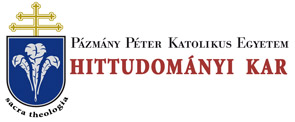Folia Theologica et Canonica 11. 33/25 (2022)
Sacra theologia
THE ECCLESIOLOGICAL WRITINGS OF SAINT JEROME... 105 canons which are attributed to St. Jerome in the Decretum Burchardi Wormatiensis are included in the referred collection.35 It is also useful to compare with the influence of the material in the Collectio Anselmi Lucensis. Taking into account the recension ‘A’ of the Collection of St. Anselm of Lucca, 93 [95] of 156 [158] patristic canons are taken over into the Decretum Gratiani, with a literal correspondence, of which 14 are attributed to St. Jerome.36 Thus four canons which are found at St. Anselm of Lucca - which do not belong to the Decretum Burchardfs material and quote the Commentarius in Matthaeum, as well as Epistola XIV and Epistola LIV - were not included in the material of the Decretum Gratiani (Ans. 7. 115; Ans. 7. 116; Ans. 10. 5; Ans. 10737). It can be observed that the canons received through Anselm’s Collection were scattered, but placed in smaller groups within the structure of the Gratian’s work. The other canons from St. Jerome were either transmitted through the textual families of Ivo of Chartres or directly incorporated into the Decretum Gratiani. There are substantial differences in content and structure among the numerous passages attributed to St. Jerome which were taken from the Decretum Burchardi, the Collectio Anselmi Lucensis, the textual families of Ivo of Chartres and the large number of texts used without the mediation of the law collections or florilegia. While in the Decretum Burchardi the texts of St. Jerome are almost identical to the original form of the church father’s writings, and this is also noticeable in the Decretum and Panormia textual families of St. Ivo of Chartres; however, in the Collectio Anselmi Lucensis we can find mainly - with a few exceptions - a highly redacted form. The longer original passages, with the juxtaposition of phrases and sentences supporting the Gregorian Reform’s viewpoint, thus have a modified structure and a clearer ecclesiological content, which were transferred without change to Gratian’s work.381 should like to add that this more precise ecclesiological interpretation is promoted already in the Decretum Gratiani by the so-called summarium which introduce the canons from 35 Friedberg I. xxiii-xxiv. 36 Ans. 1. 46=C. 24 q. 1 c. 25; Ans. 6. 136=D. 56 c. 8; Ans. 7. 2=C. 12 q. 1 c. 5; Ans. 7. 61=D. 92 c. 1; Ans. 7. 62=D. 93 c. 23; Ans. 7. 48=D. 93 c. 24; Ans. 7. 112=D. 95 c. 5; Ans. 7. 113=D. 95 c. 6; Ans. 7. 114=D. 95 c. 7; Ans. 11. 91=C. 14 q. 6 c. 4; Ans. 11. 113=C. 26 q. 7 c. 8; Ans. 12. 48=C. 24 q. 3 c. 26; Ans. 12. 49=C. 24 q. 3 c. 27; Ans. 13. 26=C. 11 q. 3 c. 93; in detail, cf. Szuromi, Sz. A., Anselm of Lucca as a Canonist (A textual-critical overview on the ‘Collectio Canonum Anselmi Lucensis’), Appendix IV: Patristic texts in the ‘Collectio Canonum Anselmi Lucensis’ (recension A) and their correspondence with BAY Vat. lat. 1361 and the ‘Decretum Gratiani ’. 37 Cf. Thaner, F. (ed.), Anselmi Collectio Canonum una cum collectione minore, II. Oeniponte 1915. 412—413, 485. 38 For a detailed critical analysis of each text, cf. Szuromi, Sz. A., Anselm of Lucca as a Canonist (A textual-critical overview on the ‘Collectio Canonum Anselmi Lucensis’), Appendix IV: Examples for the correspondence ofpatristic canons of the Collectio Canonum Anselmi Lucensis and the Decretum Gratiani.
